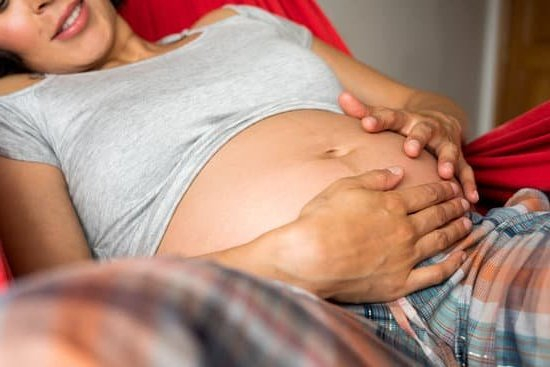Introduction
Uterine fibroids are noncancerous growths of the muscular wall of the uterus. They occur in women of all ages and affect up to 70 percent of reproductive-aged women. Common symptoms associated with uterine fibroids include heavy bleeding, pelvic pressure or pain, back pain, increased urination, infertility, and complications during pregnancy. Diagnosis is typically done with an ultrasound or magnetic resonance imaging (MRI). Additionally, a lab test may be done to check for any underlying conditions.
Uterine fibroids can impact pregnancy in a variety of ways. It is important to determine if the fibroids have an effect on the growth or development of the fetus as well as on labor and delivery. Fibroids can cause timing issues for pregnancies due to difficulties associated with fertility such as anovulation or intrauterine adhesions blocking sperm from entering the uterus. During pregnancy, fibroids can increase risks for miscarriages due to their large size causing blockages in the fallopian tubes or by leading to premature labor and rupture during delivery due to too much pressure being placed on surrounding tissue and organs. Uterine fibroids can also lead to postpartum depression caused by hormonal imbalances created following labour or cesarean sections stemming from complications related to fibroid removal surgery. While these risks are real it is important to remember options exist to manage any issues related to uterine fibroids while pregnant including monitoring fetal development closely as well as often opting out invasive treatments while pregnant if possible.
Uterine Fibroid Symptoms During Pregnancy
Uterine fibroids can cause various symptoms during pregnancy including pelvic pressure, abdominal pain, and frequent urination. Uterine fibroids may also interfere with the implantation and development of the fetus, leading to complications such as preterm birth, miscarriage, excessive vaginal bleeding, and low birth weight. Other potential risks associated with uterine fibroids during pregnancy include placental abruption (the separation of the placenta from the uterus wall) and postpartum haemorrhage (excessive bleeding after childbirth).
In order to minimise any potential risks associated with uterine fibroids pregnancy, it is recommended that women with existing uterine fibroids undergo regular medical monitoring throughout their pregnancy. Ultrasounds are often done in order to check on the growth of any existing fibroids; doctors may also prescribe medications or suggest lifestyle modifications (e.g., reducing salt intake or taking iron supplements) in order to reduce symptoms and ensure optimal prenatal care for both mother and baby. Additionally, depending on the size and location of the uterine fibroid(s), a Cesarean section may be necessary for delivery; again, it is important for those pregnant women with these conditions to consult their doctor for personalized guidance.
Treatment and Care When Pregnant With Uterine Fibroids
Uterine fibroids, also known as myomas, are a common issue for women who are pregnant. These benign growths of the uterus can range from small to large and potentially cause infertility issues or premature labor and delivery. It is best to receive a medical diagnosis if you suspect you may have uterine fibroids during your pregnancy.
Once diagnosed, treatment options for pregnant women will vary depending on the size and location of the fibroids. Generally, there are two types of approaches for treatment: medical management and interventional procedures such as a myomectomy (surgical procedure to remove fibroids from their attachment in the uterus). Medical options include lifestyle modifications such as exercise, dietary changes, relaxation techniques, or hormone therapy; while interventional procedures can involve laparoscopy (minimally invasive procedure conducted through small incisions), hysteroscopy (mild observation of the inside of the uterus using an instrument with camera lenses), or surgical myomectomy (removal of fibroid masses).
If uterine fibroids pose no health risks to you or your unborn baby, then they can generally be managed with conservative methods like bed rest and pelvic support devices. However it’s important to evaluate all of your available options before selecting a course of treatment. Your doctor can explain what holds true for your specific situation and should be consulted in order to gain insight on recommended actions.
Additionally, if you’ve been diagnosed with uterine fibroids during pregnancy it’s important that you seek education from reputable sources about managing symptoms at home. There are numerous resources available online which provide support services including forums where you can connect with other moms who have faced similar conditions. Researching these resources can provide invaluable information about understanding and even accepting what unexpected pregnancy outcomes may come up during gestation due to uterine fibroids.
Taking Measures to Reduce Uterine Fibroid Symptoms While Pregnant
Exercises: Moderate exercises like walking can help reduce discomfort caused by uterine fibroids during pregnancy. Additionally, it can improve the circulation of blood to help reduce swelling in the abdomen and legs. Performing pelvic exercises, such as yoga or Pilates, may also be beneficial for helping with posture and abdominal pressure relief.
Diet: Eating a healthy diet full of leafy greens, whole grains, and lean proteins may be helpful for reducing symptoms associated with uterine fibroids. Drinking plenty of water is also important for flushing toxins out of the body and keeping hydrated. Additionally, limiting salt intake and avoiding processed foods may help to reduce fluid retention caused by fibroid symptoms.
Supplements: Taking supplements such as omega-3 fatty acids and vitamin B12 may be beneficial for reducing inflammation associated with uterine fibroids while pregnant. Vitamin D may be helpful as well for supporting healthy bones and helping with calcium absorption needed for fetal growth. Magnesium has been found to reduce fatigue caused by fibroid symptoms, alleviating stress on the body during pregnancy.
Living With Uterine Fibroids During Pregnancy
Uterine fibroids can create a great deal of stress and anxiety in an expecting mother. Pregnant women are usually concerned about their health and the health of their baby. Coupled with the worry of having uterine fibroids, it can be difficult to process all that needs to be addressed. It is important for pregnant women to have access to resources and strategies for emotional support when living with uterine fibroids during pregnancy.
Finding additional sources of emotional support during such a vulnerable time is essential for pregnant women dealing with the changes that come along with uterine fibroids. Women should reach out to friends, family members, or supportive professionals who will provide understanding, nonjudgmental support as they navigate their new experience. Participation in online communities of other expectant mothers sharing their own stories dealing with similar issues or attending support groups dedicated to pregnant women should also be considered beneficial outlets. Additionally, couples therapy may be of help to both parents as they communicate how fibroids affect them personally and how these changes impact their relationship.
All medical decisions should always be discussed thoroughly with doctors who specialize in gynecological conditions such as those related to uterine fibroids. Utilizing the advice from medical experts and surrounding oneself with compassionate sources of emotional support when needed will help women feel more empowered facing challenges associated with their condition while pregnant, and understand that they do not need to face this journey alone.
Conclusion
Uterine fibroids are an increasingly common condition of the reproductive system that can complicate pregnancy. They present a variety of symptoms and can have serious effects on a pregnancy, from inhibiting fetal growth and increasing chances of miscarriage to increasing the risk of premature birth. Managing uterine fibroids during pregnancy is critical to ensuring healthy delivery and development of the baby. Women should discuss with their health care provider any symptoms associated with uterine fibroids that they may be experiencing, including heavy bleeding outside of one’s normal menstrual cycle, pelvic pain or pressure, abdominal enlargement or constipation.
It is important to be aware in advance if a woman has a history of uterine fibroids as they may be exacerbated by hormones released during pregnancy. Prompt diagnosis and treatment can help minimize side effects as much as possible. Common treatments for uterine fibroids during pregnancy include observation, prevention of excessive blood loss, medications such as nonsteroidal anti-inflammatory drugs (NSAIDS), uterine artery embolization, myomectomy (removal) and hysterectomy (total removal). Knowing about potential blind spots in screening for uterine fibroids can help women determine when it’s necessary to seek out more specialized testing since early detection is key.
In conclusion, it is essential for both pregnant women who are known to have utirne fibroids and those without pre-existing knowledge about this common condition to receive proper care throughout their pregnancies in order to reduce any adverse impacts on the baby’s health. Recognizing any symptoms associated with this condition quickly is crucial so that appropriate action may be taken at the earliest opportunity possible in order to give your unborn infant the best chance of a safe delivery into this world.

Welcome to my fertility blog. This is a space where I will be sharing my experiences as I navigate through the world of fertility treatments, as well as provide information and resources about fertility and pregnancy.





